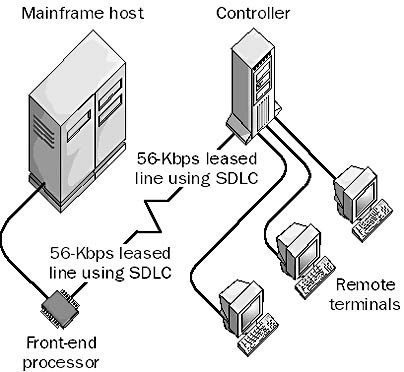Definition of Synchronous Data Link Control (SDLC) in The Network Encyclopedia.
What is Synchronous Data Link Control (SDLC)?
SDLC stands for Synchronous Data Link Control, is a data-link layer protocol developed in the 1970s by IBM for its Systems Network Architecture (SNA) networking environment. Synchronous Data Link Control (SDLC) is primarily used in wide area networks (WANs) that use leased lines to connect mainframe SNA hosts and remote terminals.
How SDLC Works?
SDLC was the first bit-oriented synchronous transmission protocol developed by IBM. It quickly displaced the older, less efficient, character-oriented synchronous protocols such as Bisync and DDCMP. In a serial SDLC link, data is sent as a synchronous bit stream divided into frames that contain addressing and control information in addition to the payload of data.
SDLC uses a master/slave architecture in which one station is designated as primary (master) and the remaining stations are secondary (slaves). The primary station establishes and tears down SDLC connections, manages these connections, and polls each secondary station in a specific order to determine whether any secondary station wants to transmit data.

You can use SDLC in a variety of connection topologies, including direct point-to-point connections between a primary and a secondary station and multipoint connections between a primary and a group of secondary stations. Ring topologies are also possible in which a primary controls a ring of secondary stations and is itself part of the ring.
Protocols derived from SDLC
A number of popular protocols have been derived from the SDLC protocol and standardized by various standards bodies. These include the following:
- High-level Data Link Control (HDLC): Developed by the International Organization for Standardization (ISO) and used by Cisco Systems routers for serial communication over leased lines as an alternative to the Point-to-Point Protocol (PPP)
- Link Access Procedure Balanced (LAPB): Part of the X.25 protocol stack
- Logical Link Control (LLC) or IEEE 802.2: The most popular data link protocol for local area networks (LANs)